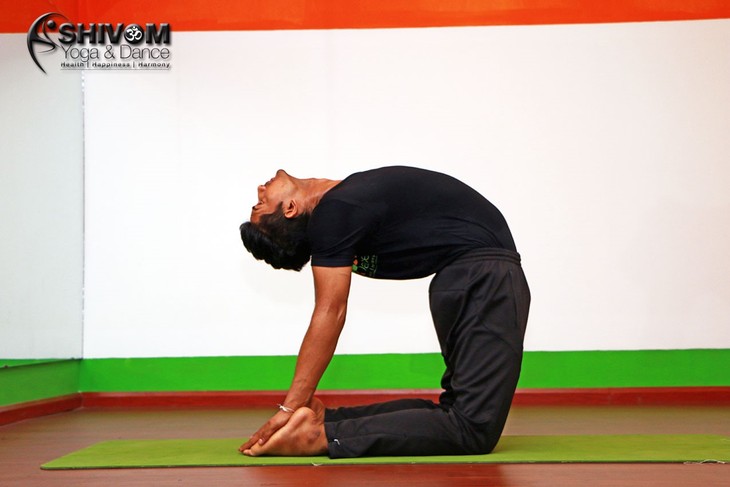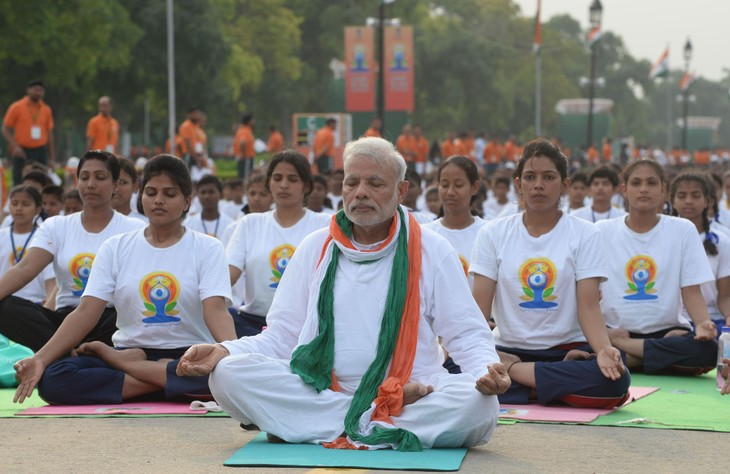(VOVworld) - India was set to lead the world in celebrating the first International Day of Yoga on June 21, 2015. How can this exercise attract great attention from a huge number of participants all over the world? Today VOV talks to Master Raja Rajendra Gupta from Mumbai, India, teacher of Yoga in Shivom Yoga Club in Hanoi, who has more than ten years as a master of Yoga about this art.
Q: Hello Raja Gupta and thank you for joining us today. Can you briefly introduce us to the origins of Yoga in India?
A: It originated in ancient time by Lord Shiva. He is the first master of Yoga. We used to pray him. His commentary was recorded in a book called Sive Samhita. Then the second master is Rishi Vasisht whose Vasist Samhita book. After that the third master came. His name is Rishi Grehand. Then Sage Patanjali came and was known as the father of Yoga.
Q: How do Indian people learn and teach Yoga? Is it popular in your country?
A: Yeah it is very popular in India. More than 60% of people in India practice Yoga. It is true. In our country, there are many subjects, for example, math, science, commerce, but because Yoga is the culture of India, the government includes the Yoga subject in the schools. It is similar to other subjects. We have University of Yoga, and in every school, we have one subject called The Yoga. We have diploma of “Yoga and science”, “Yoga therapy”… One of the most amazing jobs in India is the Yoga master. However, it is not easy to become a teacher of Yoga, because our training is very hard and strict. No one can become the best in Yoga because Yoga is learning and learning.
Q: How many types of Yoga are there in India?
A: In history, there was only one type of Yoga that you could not practice, you just feel it. It happened in your life. There are many types of Yoga nowadays, because young generations develop a variety of Yoga and they give them names. The main five types of Yoga are: Hatha Yoga for the development of body, Karma Yoga means Action Yoga, Jnana Yoga is for the development of mind, Raja Yoga is for the soul, and Bhakti Yoga is Emotion Yoga.
Q: How does Yoga benefit people’s health?
A: Yoga is physical, mental and spiritual practice. By practicing Yoga, you can realize your body; you can improve your life-style. Because when you do Yoga, your body will become fit; your mind will become broad thinking. You can think in a right way.
 |
Master of Yoga Raja Rajendra Gupta (Photo: Shivom Yoga Club)
|
Q: Are there any notices when practicing Yoga?
A: There are more than 84 millions poses and each pose holds different characteristics and functions. In Yoga, breathing is very important. Actions are related to breathing. When we’re doing exercises, sometimes we have to hold the breath, sometimes we have to accelerate breath, and sometimes we have to take normal breathing. Before practicing Yoga, your stomach should be empty. This will give you more benefits. Because if your stomach is not empty, you will feel lazy. You can practice Yoga at anytime, but the two best times are before the sunrise and during the sunset. Because in the morning, before the sunrise, your body may not be completely active, but it will easily accept what you are doing. And during the sunset, your body will become automatically flexible.
 |
|
Thousands of participants perform Yoga on Rajpath in New Delhi (Photo: AFP)
|
Q: How did June 21st become International Yoga Day? Is this an annual event?
A: Our Prime Minister, Shri Narendra Modi, has presented his view in the UN Council that we should have a Yoga Day in the world. 193 members supported him. And Vietnam is one of the first countries to support to make Yoga Day. Last year was the first time, so it’s decided by the Indian government what we did in Yoga Day. They designed a 35-mintute-exercise and may be next year will be the same.
 |
|
Indian Prime Minister Narendra Modi participates in a mass yoga session along with other Indian yoga practitioners to mark the International Yoga Day (Photo: AFP)
|
Q: Thank you so much and that was master Raja Gupta from India on our Cultural Rendezvous! See you next time for more cultural activities from around the world. For now, goodbye!